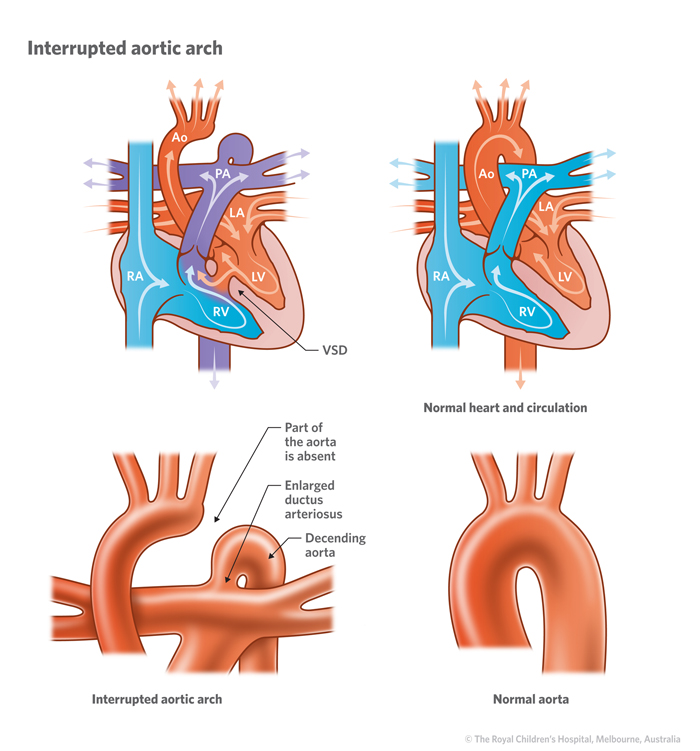

In type A, the difference in saturation is between the upper and lower limbs, with the lower limbs having lower saturation in type B, there is a difference in saturation between the left and right arms, with the left arm having lower saturation. Because of right-to-left shunting at the ductus arteriosus, infants might initially show differential oxygen saturation or cyanosis. Clinical and epidemiologic notesĪs noted, an early presentation is heart failure and cardiogenic shock, with rapid clinical deterioration as the ductus closes. Newborn screening via pulse oximetry can lead to earlier diagnosis. Postnatal. Infants can present clinically in the early neonatal period, when the ductus closes, with signs and symptoms of congestive heart failure and systemic hypoperfusion (cardiogenic shock). Prenatally diagnosed cases should be confirmed postnatally. Prenatal. IAA is easily missed on the obstetric anomaly scan, though it might be suspected based on discrepancy between the left and right ventricular sizes. Q25.4 Other congenital malformations of aorta (heterogeneous might include interrupted aortic arch) Diagnosis Q25.21 Interruption of aortic arch (preferred) Type C: The discontinuity is more proximal still, between the brachiocephalic artery and the common carotid artery.Type B (the most common form): The discontinuity is more proximal, between the left carotid and subclavian.Type A: The discontinuity is distal to the left subclavian artery (approximately in the same region as coarctation of the aorta).4.9h Limb Deficiency: Longitudinal Axial Limb Deficiency – Split Hand and Foot (Q71.6, Q72.7).4.9e Limb Deficiency: Transverse Intercalary (Q71.1, Q72.1, Q72.4).4.9b Congenital Malformations and Deformations of the Musculoskeletal System: Limb Reduction Defects/Limb Deficiencies.4.9a Congenital Malformations and Deformations of the Musculoskeletal System: Talipes Equinovarus (Q66.0).4.8 Congenital Malformations of Genital Organs Hypospadias (Q54.0–Q54.9).4.7 Congenital Malformations of the Digestive System.4.5h Interrupted Aortic Arch (q25.21, Preferred Also Q25.2, Q25.4).

4.5g Hypoplastic Left Heart Syndrome (Q23.4).4.5c Transposition of Great Arteries (Q20.3).4.5a Overview Congenital Heart D: Prenatal Diagnosis and Postnatal Confirmation.4.4 Congenital Malformations of the Ear.4.3 Congenital Anomalies of the Nervous System: Microcephaly.4.2 Congenital Malformations of the Nervous System: Neural Tube Defects.4.1 List of Selected External and Internal Congenital Anomalies to Consider for Monitoring.Chapter 4: Diagnosing and Coding Congenital Anomalies.


 0 kommentar(er)
0 kommentar(er)
